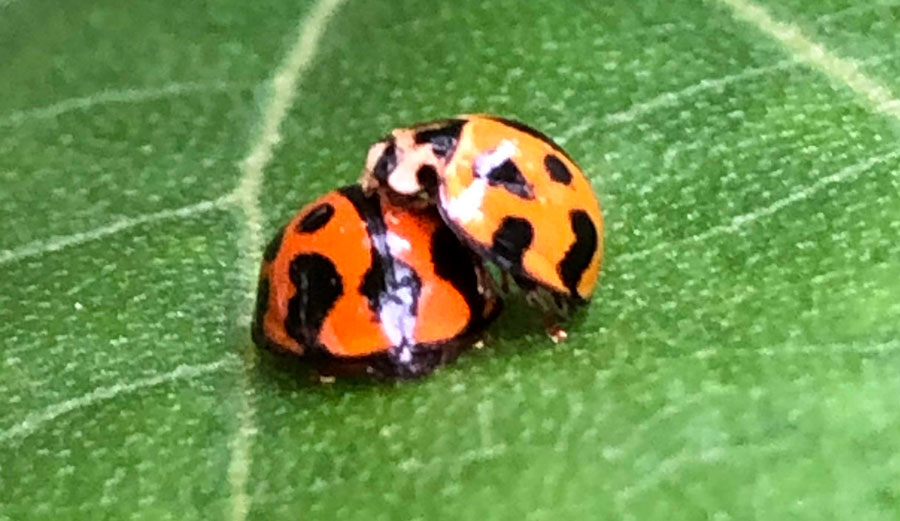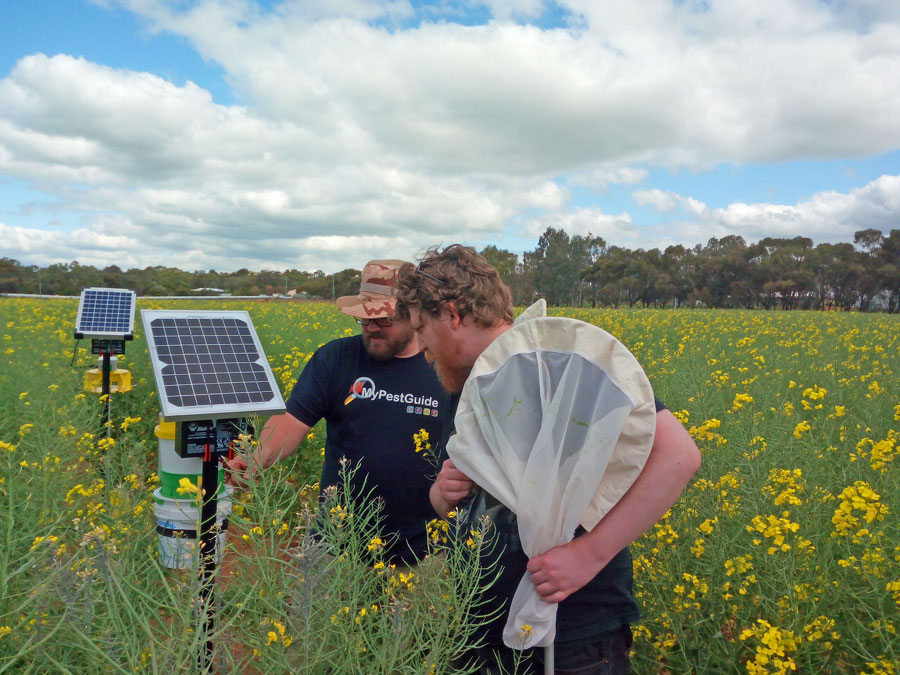Key points
- Alternative methods of control need to be sought for the green peach aphid as the pest rapidly develops insecticide resistance
- Semiochemicals produced by natural predators may have potential as a biological control agent
Chemical control of the green peach aphid (Myzus persicae – GPA) is still the main tool for growers, but options are diminishing. Globally, the aphid has developed resistance to more pesticides than any other pest species. In WA, sulfoxaflor (Transform®) and carbamate pirimicarb (for example Pirimor®) are the active ingredients registered for use on GPA in canola. GPA already has resistance to carbamate and there is evidence that it is developing resistance to sulfoxaflor.
One option is biological control, using predators, parasites and pathogens to control a pest population. However, the use of biological control for aphids has not been very successful, generally due to aphids reproducing too quickly for their natural enemies to keep up and natural enemies arriving too late in the season.
However, as GPA continues to develop insecticide resistance faster than new insecticides can be developed, time is up.

Ladybird beetles, such as these two Coelophora inaequalis, use semiochemicals to find their prey. Potentially, these semiochemicals could be used to more efficiently control green peach aphid.
Seeking innovative approaches
So how can we make biological control of aphids in broadacre crops, such as canola, viable? One potential is semiochemicals. These are organic chemicals, such as pheromones, that convey a message from one organism to another. There are two potential uses of semiochemicals in the field, neither of which excludes the other. The first is to use them as lures – to bring natural enemies into the field earlier so they have more impact on the aphid population.
This would likely need to be coupled with some form of artificial diet or supplementary crop, to provide food for the natural enemies. Most natural enemies in their adult stages are mobile and capable of leaving the crop if there is insufficient food.
The other method of biological control is to raise beneficial insects in another location and expose them to the semiochemical, then mass-release them.
In this scenario, the semiochemicals are used to ‘prime’ the insects, so that they learn to associate the chemicals of the crop they are being released into with prey. Insects are known to be able to learn and there is evidence that they are attracted to the chemicals that are present when they hatch or pupate.
By exposing newly emerging insects to chemicals associated with the target crop, we could help them spend longer foraging in the field, consuming aphids and hopefully suppressing aphid populations.

Andrew Phillips (right), with his co-supervisor from the Department of Primary Industries and Regional Development, Dr Dustin Severtson, sweep netting a canola crop and checking smart traps for aphids and other pests at Northam, Western Australia. Photo: Wei Xu, Murdoch University
Blue-sky project
To apply either of these methods, though, knowledge of the chemicals that natural enemies find attractive is needed.
This GRDC-invested PhD project, supervised by Dr Wei Xu and Dr Stephen Milroy from Murdoch University and Dr Dustin Severtson from the WA Department of Primary Industries and Regional Development (DPIRD), began in 2019.
The project aims to identify the natural enemies, such as ladybird beetles (Coccinella transversalis and Harmonia conformis) and parasitic wasps (Diaeretiella rapae) present in south-west WA canola fields and the chemicals released by aphids and aphid-infested canola.
This will be followed by behavioural and electrophysiological experiments to determine which of these chemicals can potentially be used to help control aphid populations in canola fields.
More information: Andrew Phillips, 0448 986 783, aphillips1717@outlook.com

























































